An earlier version of this post, written by Micah Messenheimer, assistant curator of photography in the Prints and Photographs Division, was published on “Picture This,” the division’s blog.
Gas pumps in Yoder, Kans.
A giant coffee pot that doubles as a restaurant, drive-in movie theaters, old gas pumps and vintage hotels: these are but a few of the examples included in the John Margolies Roadside America Photograph Archive.
We’re featuring the archive this month under the “free to use and reuse” feature on the Library’s home page. Each month, the website showcases content from the Library’s collections that has no known copyright restrictions—meaning you can use the content as you wish. Just this summer, the Library made its Margolies holdings—one of the most comprehensive documentary studies of 20th-century U.S. vernacular architecture—available digitally on the website.
Over the span of nearly 40 years, Margolies took more than 11,000 color-slide photographs of vernacular structures across America’s highways, byways and main streets. Traversing the country, he was drawn to the architecture that came to define travel by car—motels, diners and gas stations—but also to quintessentially American oddities: buildings in the shape of dinosaurs, the sculpted concrete and plaster obstacles of miniature golf courses and parks featuring attractions from parrots to petrified rocks.

Giant dice on a miniature golf course in Roseville, Mich.
Vernacular roadside and commercial structures spread with the boom of suburbanization and the expansion of paved roads across the United States in the prosperous decades after World War II. Yet, in many instances, the only remaining record of these buildings is on Margolies’ film, as tourist architecture was endangered by the expansion of the interstate system and changing travel desires. Small town main streets were bypassed for the speedier travel of the freeway.
For Margolies, the shift to freeway travel took the joy out of the road trip and the architecture it dreamt up. Rather than stopping to enjoy sights passed along the drive, the point became to travel as far and as fast as possible. Yet even he came to recognize the amusement of architecture associated with chain and franchise businesses when designs evolved and iconic examples began to fade away.
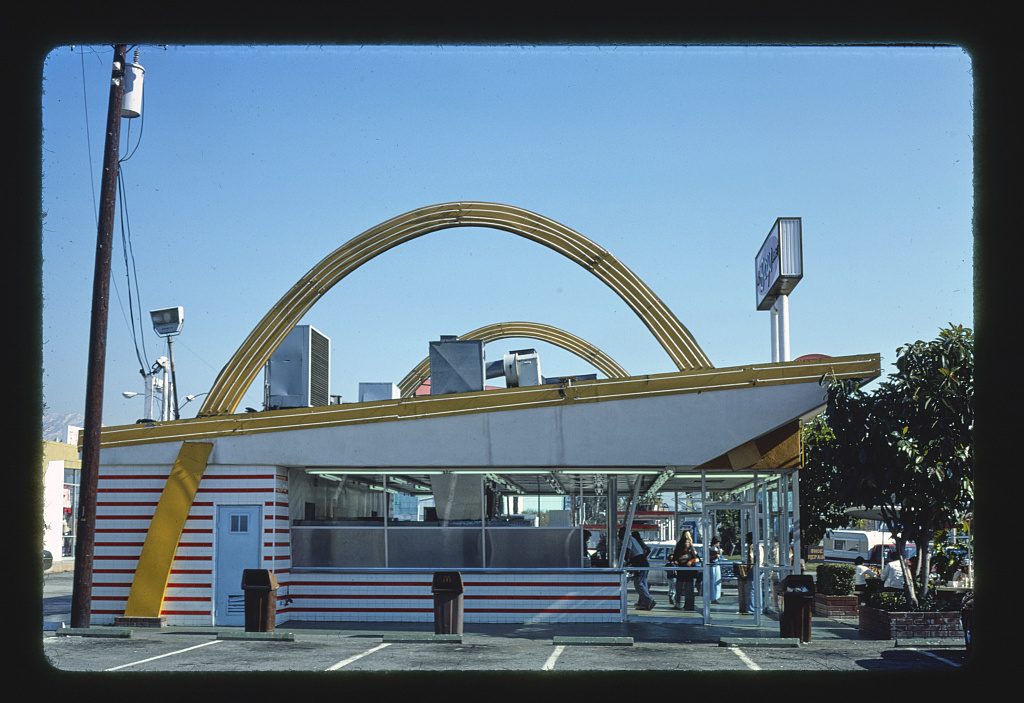
McDonald’s in Azusa, Calif.
The architecture that drew Margolies’ eye was often derided by critics as aesthetically unstudied, tacky or even ugly. Margolies, in turn, faulted architectural historians for idealizing canonical works that did little to reflect everyday, lived experience through their forms.
In his view, ephemeral and vernacular architecture better told the story of 20th-century America and, just as frequently, expressed the eccentricity and ingenuity of its makers. New building materials and techniques allowed for whimsical design elements that served no structural purpose. Decoration was prominent, but usually coarsely constructed as it was meant to be comprehensible from a distance.
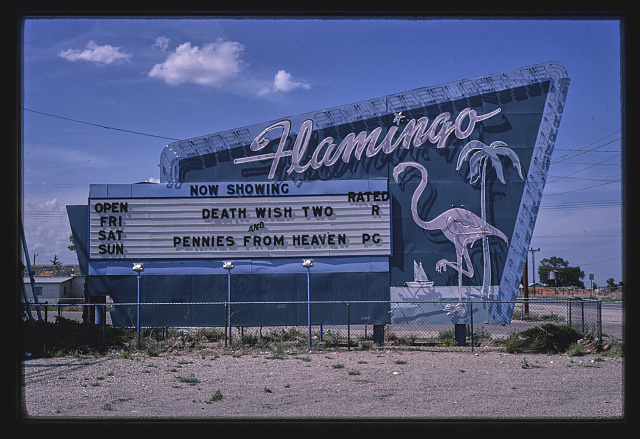
Flamingo Drive-In Theater in Hobbs, N. Mex.
Because roadside architecture was built to grab the attention of a motorist traveling down the road, it was rarely constructed with longevity in mind. These buildings acted as what New York Times architecture critic Paul Goldberger termed “exclamation points of the landscape.”
Although much of the architecture Margolies documented was well past its heyday by the time he photographed it, he rejected the word “nostalgia” in describing his work, stating, “I don’t want to be ahead of my time. I want to be in sync with it.” With his thousands of photographs now online, viewers can roam in his footsteps (or tire tracks) to enjoy roadside America.
Scroll down for more Margolies images. And if you find an interesting way to use the photos, we’d love to know—post a comment describing your use!
John Margolies made the photographs in the John Margolies Roadside America Photograph Archive. The Library of Congress purchased the intellectual property rights for the photographs with the archive and, therefore, there are no known copyright restrictions on the photographs. Privacy and publicity rights may apply. Photographs of sculpture or other works of art may be restricted by the copyright of the sculptor or artist.
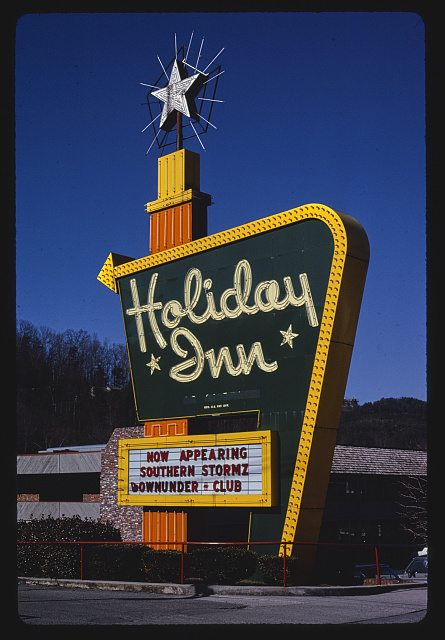
Holiday Inn in Gatlinburg, Tenn.
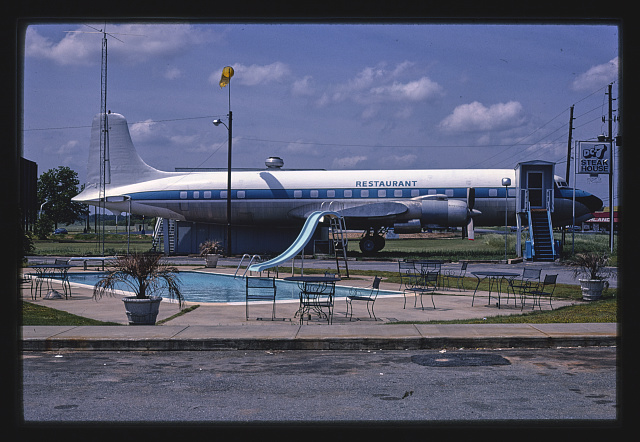
DC-7 Steakhouse in Byron, Ga.
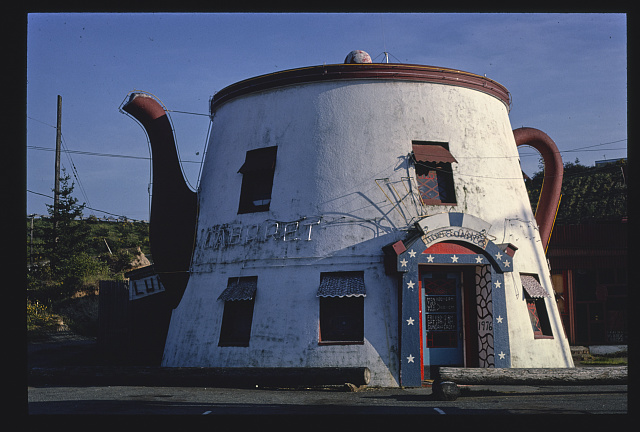
Bob’s Java Jive in Tacoma, Wash.















